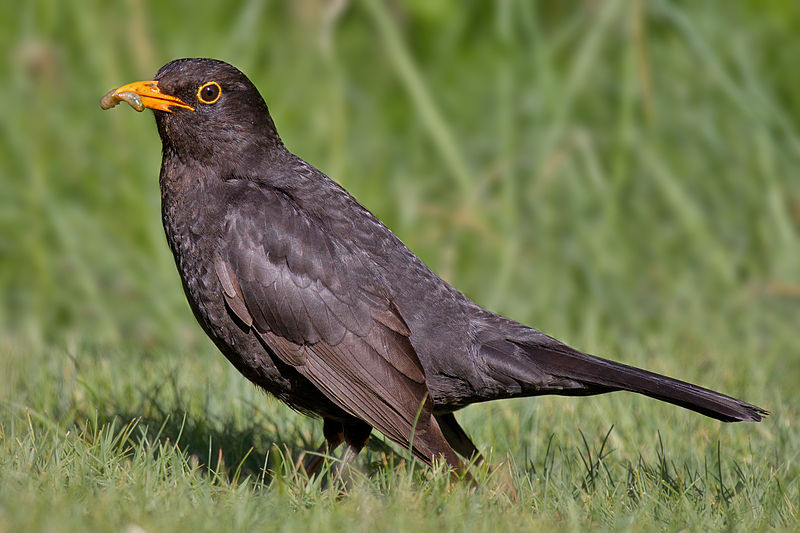- Series:Animals, God’s Design, Transcript English
Job 12:7, 9-10
“But ask now the beasts, and they shall teach thee; and the fowls of the air, and they shall tell thee: Who knoweth not in all these that the hand of the LORD hath wrought this? In whose hand [is] the soul of every living thing, and the breath of all mankind.”
European blackbirds love southern Germany so much that many of them stay for the winter. Some of the blackbirds migrate to North Africa, Spain or southern France to escape the cold. Like the robin in North America, however, some European blackbirds don’t migrate.
 European blackbirds are able to live through the cold German winter because they are designed with several features that use sophisticated principles from biochemistry and physics. To cope with the winter cold, the birds fluff up their feathers. This creates more insulating dead air spaces between their warm bodies and the cold. Then they tuck their head inside the feathers, making their body into a ball. A round ball is the most heat-conserving shape possible for any object. The ball also protects poorly insulated parts of their bodies – like feet, legs and beak.
European blackbirds are able to live through the cold German winter because they are designed with several features that use sophisticated principles from biochemistry and physics. To cope with the winter cold, the birds fluff up their feathers. This creates more insulating dead air spaces between their warm bodies and the cold. Then they tuck their head inside the feathers, making their body into a ball. A round ball is the most heat-conserving shape possible for any object. The ball also protects poorly insulated parts of their bodies – like feet, legs and beak.
Food is also more scarce in the winter. On top of that, the birds’ need for energy is five times higher at 20 degrees below zero (F) than it is during the summer. The blackbirds reduce their energy needs by lowering their body temperature at night when they are curled into a ball. Scientists have found that, as a result, European blackbirds are in no danger of freezing, even at 20 degrees below zero, as long as they can get enough food!
The intelligent special designs found in the European blackbird reflect a sophisticated knowledge of biochemistry and physics. By its very existence, the European blackbird glorifies our Creator God.
Prayer:
I thank You, Lord, that You have designed Your creation not only for the benefit of Your creatures, but also so that it is nearly impossible to attribute Your handiwork to someone or something else. Amen.
Notes:
“Stay-at-home blackbirds cope with cold.” Science News, Aug. 25, 1984, p. 119. Photo: Common blackbird (England). Courtesy of Andreas Trepte (www.photo-natur.de).
